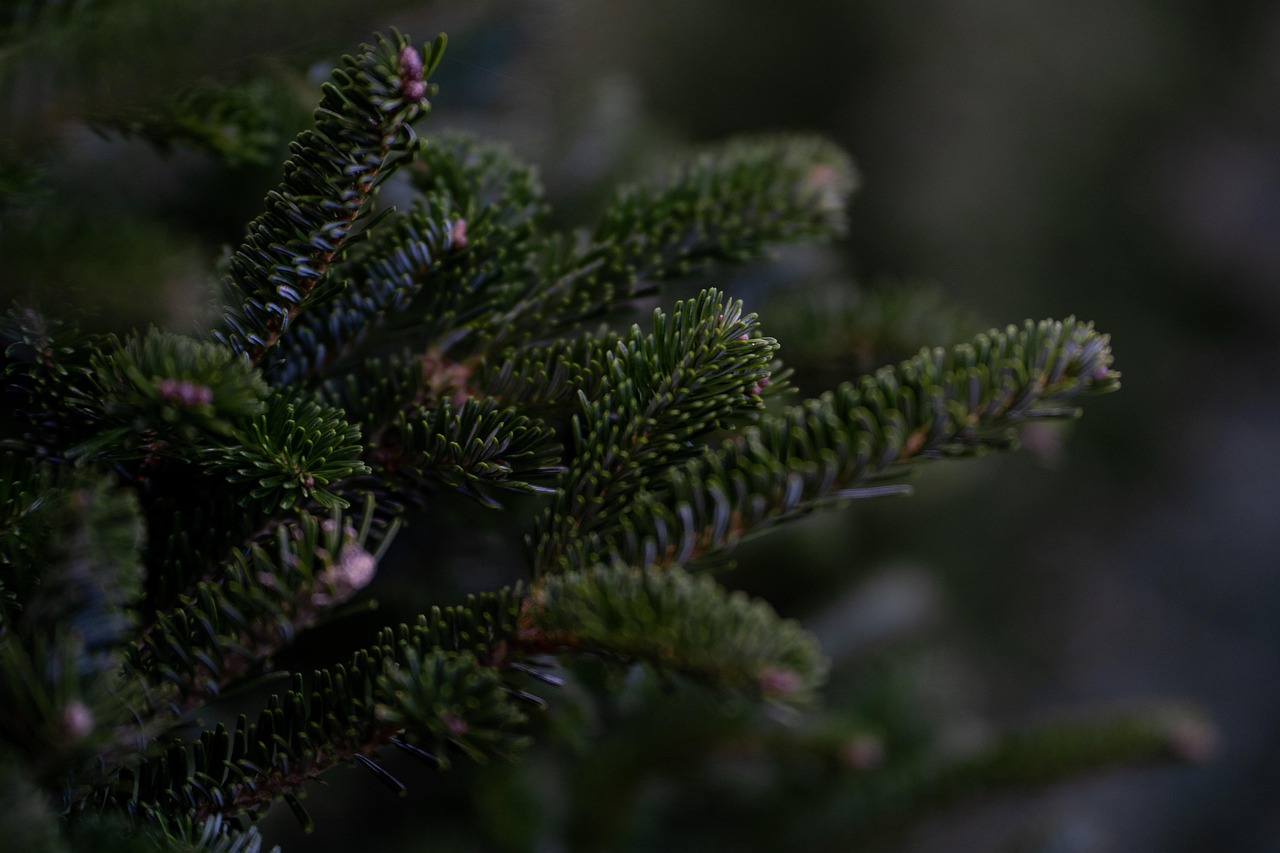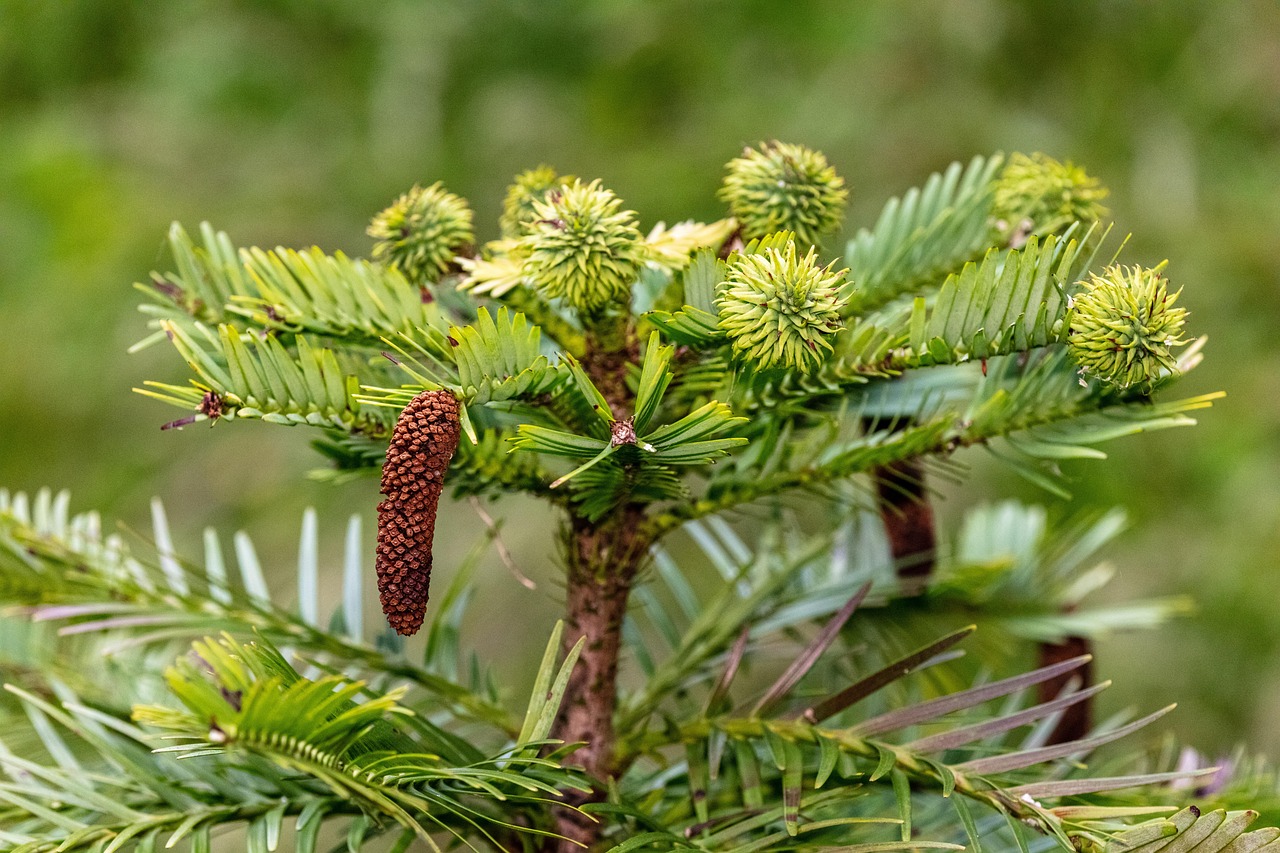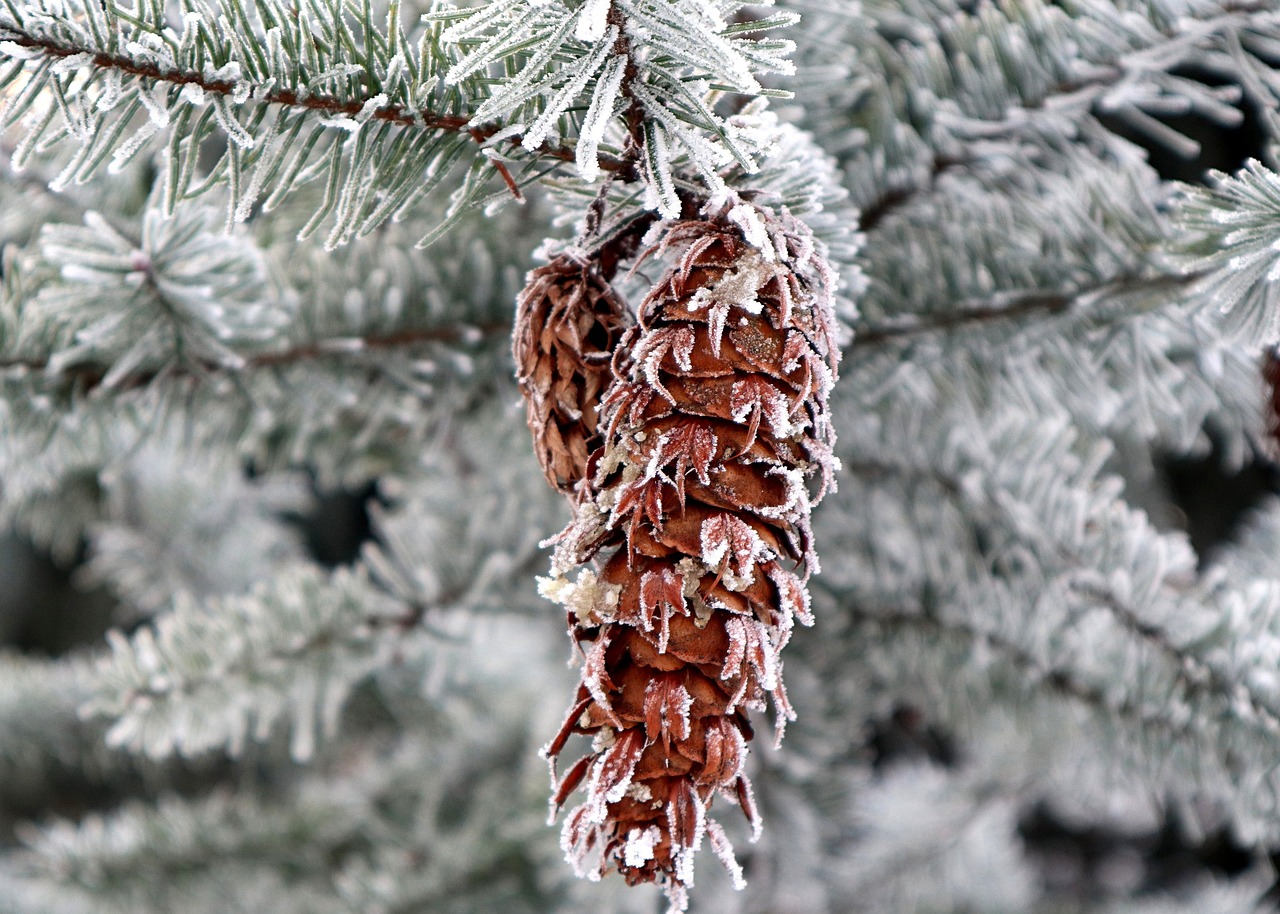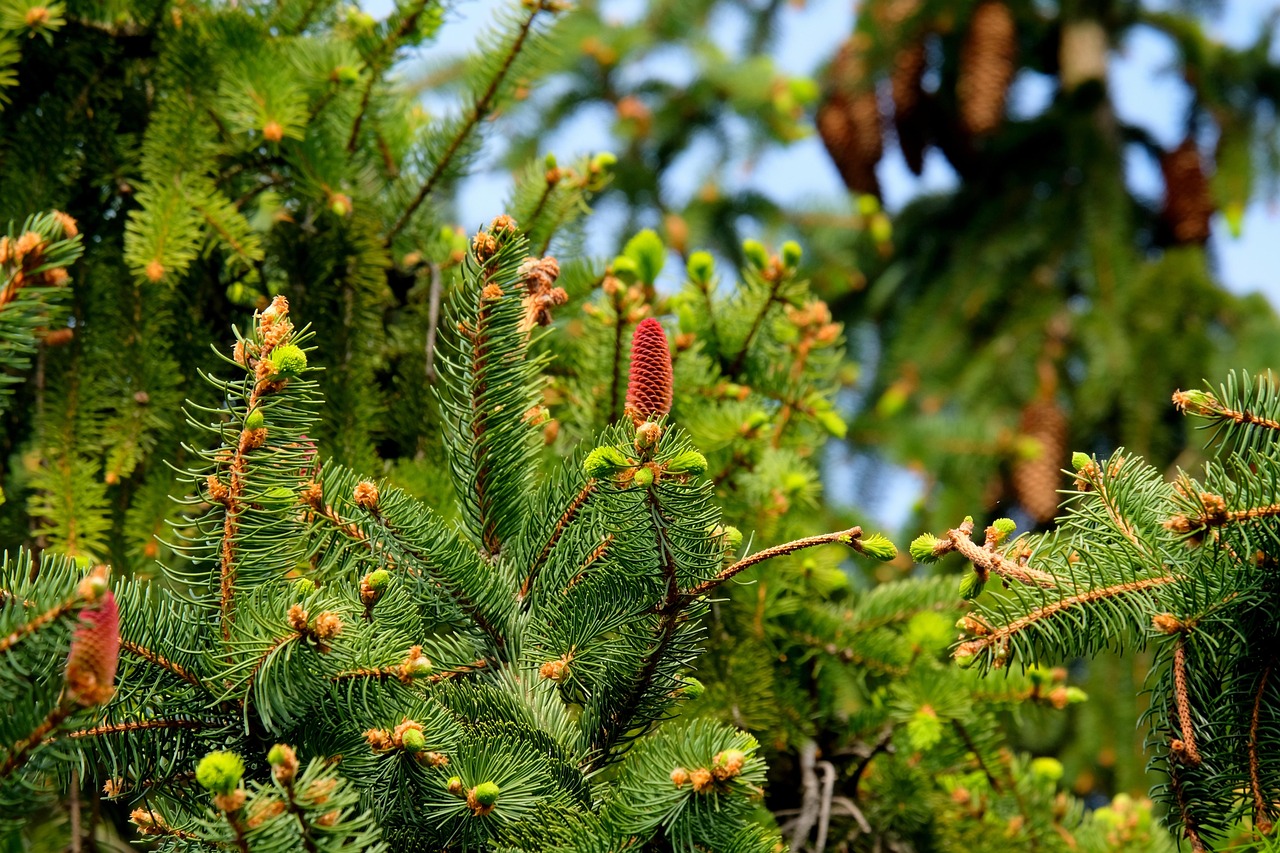The Douglas fir (Pseudotsuga menziesii) employs several remarkable adaptations to survive in diverse environments. These include thick bark for protection against fire, a deep root system for stability and water access, and needle-like leaves that minimize water loss while maximizing photosynthesis.
The Douglas fir is a prominent species in North America, known for its towering height and impressive growth rate. It thrives in various forest ecosystems, from coastal regions to mountainous terrains. This adaptability allows the Douglas fir to occupy a wide range of habitats, contributing to its status as one of the most important timber species in the region.
Understanding the adaptations of the Douglas fir helps illustrate how it has survived and thrived in challenging conditions. Its evolutionary traits have developed over thousands of years, allowing it to cope with factors such as climate variability, soil conditions, and threats from pests and diseases.
Physical Adaptations of Douglas Fir

The physical characteristics of the Douglas fir are among its most notable adaptations. These adaptations enable the tree to withstand environmental stressors effectively. Key features include:
- Thick Bark: The bark of a mature Douglas fir can be up to 5 inches thick. This thick bark acts as insulation against fire and protects the inner tissues from insect infestations and diseases.
- Deep Root System: The Douglas fir develops a robust root system that anchors it firmly in the ground. The roots can reach deep into the soil, allowing the tree to access water and nutrients even during dry periods.
- Needle-like Leaves: The tree’s needle-like leaves are adapted to reduce water loss. Their shape minimizes surface area while retaining the ability to photosynthesize efficiently. This adaptation is vital in both wet and dry environments.
Physiological Adaptations
In addition to its physical characteristics, the Douglas fir exhibits several physiological adaptations that enhance its survival. These adaptations are crucial for optimizing growth and reproduction under varying environmental conditions.
- Photosynthesis Efficiency: The tree’s needles contain a high concentration of chlorophyll. This allows for efficient photosynthesis, even in lower light conditions found in dense forests.
- Cold Hardiness: Douglas firs have developed tolerance to cold temperatures. They can withstand freezing conditions without significant damage, allowing them to thrive in mountainous regions.
- Drought Resistance: The ability to enter a state of dormancy during extended dry spells helps the Douglas fir conserve resources. This adaptation allows the tree to survive periods of drought without permanent damage.
Reproductive Strategies
The reproductive strategies of the Douglas fir also play a crucial role in its survival and proliferation. These strategies ensure successful seed dispersal and establishment of new growth in various habitats.
- Seed Production: The Douglas fir produces large quantities of seeds annually, increasing the likelihood of successful germination and establishment in suitable environments.
- Wind Dispersal: The seeds have wings that enable them to be carried by the wind over considerable distances. This adaptation facilitates colonization of new areas.
- Seed Dormancy: The seeds can remain dormant for extended periods until conditions are favorable for germination. This ensures that the species can take advantage of optimal growing conditions when they arise.
Through these various adaptations, the Douglas fir demonstrates a remarkable ability to survive and thrive across diverse environments. As we explore further, we will delve deeper into specific ecological relationships and challenges faced by this resilient species.
Ecological Relationships of Douglas Fir
The Douglas fir not only possesses remarkable adaptations for its survival but also engages in various ecological relationships that enhance its growth and stability. These interactions with other organisms create a dynamic ecosystem, supporting not only the Douglas fir but also a multitude of other species.
Symbiotic Relationships
One of the most critical ecological relationships for the Douglas fir is its symbiotic relationship with mycorrhizal fungi. This association is vital for nutrient uptake and overall health of the tree.
- Mycorrhizal Fungi: The roots of the Douglas fir form associations with mycorrhizal fungi, which enhance the tree’s ability to absorb water and essential nutrients, such as nitrogen and phosphorus. In return, the fungi receive carbohydrates produced by the tree through photosynthesis.
- Mutual Benefits: This mutualistic relationship allows the Douglas fir to thrive in nutrient-poor soils, which is especially beneficial in its native habitats where soil quality may vary widely.
Insect Interactions
The Douglas fir also interacts with various insects, some of which can be beneficial while others pose significant threats. Understanding these dynamics is crucial for the health of the tree.
- Pollinators: Various insects, including bees, play a role in pollinating the flowers of the Douglas fir. While they are not the primary pollinators since Douglas firs are primarily wind-pollinated, they can still contribute to reproductive success.
- Pests: On the other hand, certain insects like bark beetles can become pests. These beetles bore into the bark and can cause significant damage. However, healthy Douglas firs with strong defenses can often withstand these attacks.
Adaptations to Environmental Stressors
The Douglas fir has developed specific adaptations to combat various environmental stressors that threaten its survival. These adaptations allow it to remain resilient in the face of challenges such as drought, fire, and climate change.
Drought Adaptations
Drought conditions can severely impact forest ecosystems. The Douglas fir has several adaptations that enable it to cope with water scarcity.
- Deep Root System: As mentioned previously, a deep root system allows access to groundwater during dry periods, providing a reliable source of hydration.
- Needle Structure: The needle-like leaves reduce transpiration rates due to their surface area and waxy coating. This adaptation minimizes water loss while still enabling photosynthesis.
Fire Resistance
Fire is a natural part of many forest ecosystems. The Douglas fir has evolved several traits that enhance its resistance to fire.
- Thick Bark: The thick bark not only protects against insect damage but also insulates the tree’s inner tissues from heat during fires.
- High Canopy: The growth pattern of the Douglas fir results in a high canopy that helps prevent flames from reaching critical parts of the tree.
Impact of Climate Change

Climate change poses a significant threat to forests worldwide, including those dominated by Douglas firs. Understanding how these trees adapt to changing conditions is essential for their future survival.
- Temperature Tolerance: Douglas firs have shown some capacity to adapt to rising temperatures. Their ability to thrive in varied climates may provide a buffer against the effects of climate change.
- Phenological Changes: Changes in flowering and seed production times may occur as temperatures rise. These adjustments are critical for synchronization with pollinators and seed dispersers.
The intricate ecological relationships and adaptations of the Douglas fir illustrate its resilience in a changing world. As we continue exploring further, we will delve into conservation efforts and management practices aimed at preserving this remarkable species and its habitat.

Conservation Efforts for Douglas Fir
As a vital species in many forest ecosystems, conservation efforts for the Douglas fir are paramount. Protecting this tree not only benefits its survival but also supports the broader ecological community that relies on it. Various strategies are being employed to ensure that Douglas fir populations remain healthy and resilient.
Protected Areas and Reserves
Establishing protected areas is one of the most effective ways to conserve Douglas fir habitats. These reserves safeguard the ecosystems in which these trees thrive, allowing them to flourish without the pressures of logging, urban development, and other human activities.
- National and State Parks: Many national and state parks in the United States and Canada include significant populations of Douglas fir. These parks provide a sanctuary for the trees while preserving biodiversity.
- Wildlife Corridors: Creating wildlife corridors helps connect fragmented habitats. This allows for the movement of species, including those dependent on Douglas fir forests, enhancing genetic diversity and ecosystem resilience.
Sustainable Forestry Practices
Sustainable forestry practices are essential for managing Douglas fir populations while meeting human needs for wood products. These practices aim to balance ecological health with economic interests.
- Selective Logging: Instead of clear-cutting, selective logging focuses on removing specific trees while preserving the overall structure and function of the forest. This method helps maintain habitat quality for various species.
- Reforestation: Replanting Douglas firs after logging is crucial for ensuring that populations remain stable. This practice often involves planting seedlings grown from local genetic stock to promote adaptability.
Community Engagement and Education
Community engagement plays a vital role in the conservation of Douglas fir forests. Educating the public about the importance of these trees fosters a sense of stewardship and encourages sustainable practices.
- Workshops and Seminars: Organizing workshops can help inform local communities about the ecological significance of Douglas firs and the threats they face. Knowledge sharing is essential for fostering a culture of conservation.
- Volunteer Programs: Many organizations offer volunteer opportunities for individuals to participate in reforestation projects or habitat restoration initiatives. This hands-on involvement helps build a connection between people and nature.
Research and Monitoring

Ongoing research and monitoring are critical for understanding the health of Douglas fir populations and their ecosystems. Scientific studies provide valuable data that inform conservation strategies.
- Ecological Studies: Researchers study various aspects of Douglas fir ecology, including growth patterns, responses to climate change, and interactions with other species. This information is vital for making informed management decisions.
- Monitoring Programs: Continuous monitoring of Douglas fir populations helps detect changes in health, growth rates, and pest infestations. Early detection is crucial for implementing timely interventions.
Impact of Invasive Species
The presence of invasive species poses significant challenges to the health of Douglas fir forests. Addressing these threats is essential for maintaining ecosystem integrity.
- Invasive Plants: Non-native plants can outcompete native species for resources, leading to reduced biodiversity. Management efforts focus on controlling these invasive species through removal and restoration practices.
- Pests and Diseases: Invasive insects, such as bark beetles, can threaten Douglas fir populations. Monitoring and implementing pest management strategies are critical to protecting these trees from significant damage.
Through a combination of conservation efforts, sustainable practices, community engagement, and research, we can work towards ensuring the long-term survival of the Douglas fir. Each strategy plays a part in preserving this magnificent tree and the ecosystems it supports.
Future Outlook for Douglas Fir
The future of the Douglas fir is intertwined with various environmental factors and human activities. As climate change continues to impact ecosystems globally, understanding how these trees will adapt and survive in shifting conditions is crucial for their preservation. Ongoing research is essential for predicting how these trees will respond to increased temperatures, altered precipitation patterns, and extreme weather events.
Moreover, as forest management practices evolve, integrating ecological knowledge into these strategies will be vital. This includes recognizing the significance of preserving genetic diversity within Douglas fir populations. A diverse gene pool enhances resilience against diseases and pests, ensuring that the species can adapt to changing environments.
Community Involvement and Advocacy
Engaging local communities in conservation efforts is a powerful tool for ensuring the protection of Douglas fir forests. Community members often possess valuable knowledge about their local ecosystems, which can inform conservation strategies. Advocacy is also crucial; raising awareness about the importance of Douglas fir forests can lead to increased support for protective measures at local and national levels.
Educational programs aimed at schools and local organizations can foster a new generation of stewards who understand the value of preserving these vital ecosystems. Furthermore, partnerships between governmental agencies, non-profit organizations, and local communities can enhance conservation outcomes through collaborative efforts.
The Role of Technology in Conservation
Advancements in technology are beginning to play a significant role in the conservation of Douglas fir forests. Remote sensing technologies, such as satellite imagery and drones, allow for real-time monitoring of forest health and changes in land use. This data can help identify areas that require immediate attention, such as those affected by invasive species or disease outbreaks.
Additionally, using Geographic Information Systems (GIS) enables land managers to plan and implement more effective conservation strategies. By analyzing spatial data, they can make informed decisions about where to focus restoration efforts and how to allocate resources efficiently.
Final Thoughts
The Douglas fir stands as a symbol of resilience in the face of adversity. Its adaptations for survival, from physical traits to ecological relationships, exemplify the intricate balance of nature. As we confront the challenges posed by climate change, invasive species, and human development, it becomes increasingly clear that proactive measures are essential for preserving this magnificent tree and its ecosystem.
Conservation efforts, sustainable forest management practices, and community engagement are all integral components of safeguarding the future of the Douglas fir. By fostering a deeper understanding of its ecological importance and advocating for its protection, we can ensure that this vital species continues to thrive for generations to come.
Ultimately, the story of the Douglas fir is not just about a single species; it reflects the broader narrative of our relationship with nature. It reminds us of our responsibility to protect the natural world and all its inhabitants. Through collective action and commitment to conservation, we can create a sustainable future that honors this remarkable tree and the ecosystems it supports.
